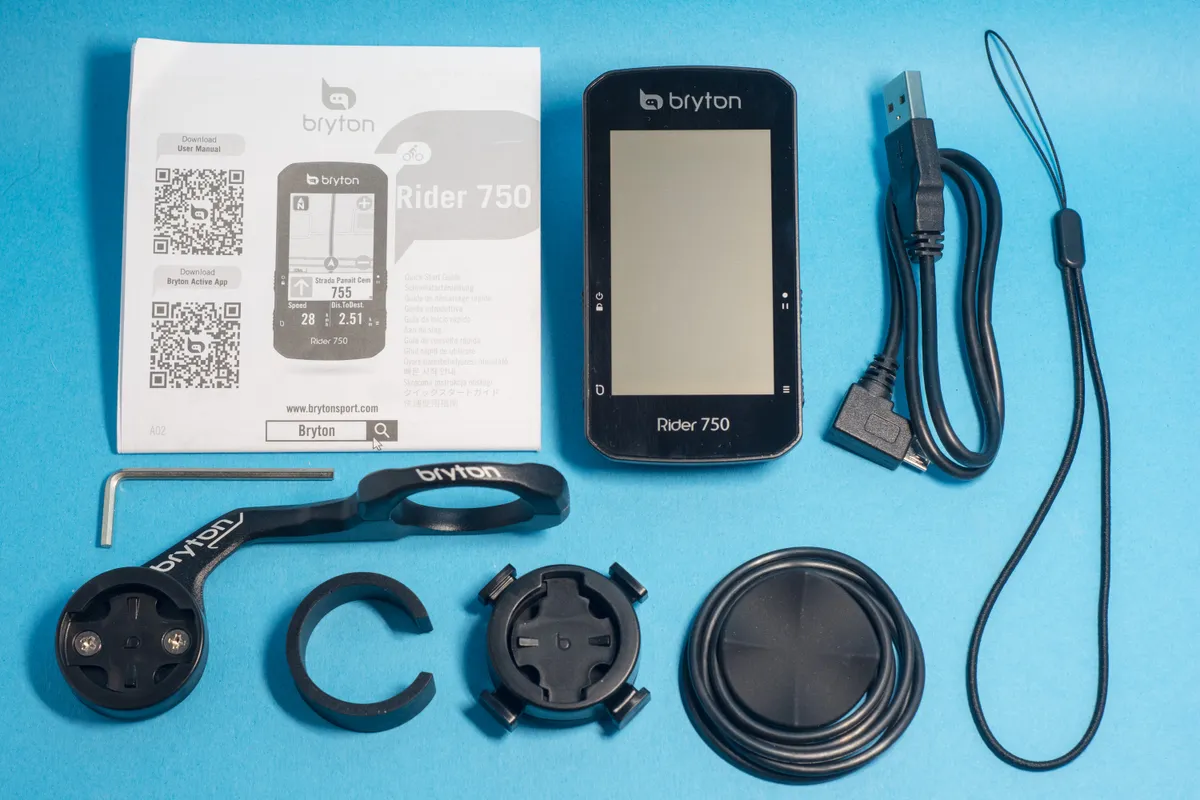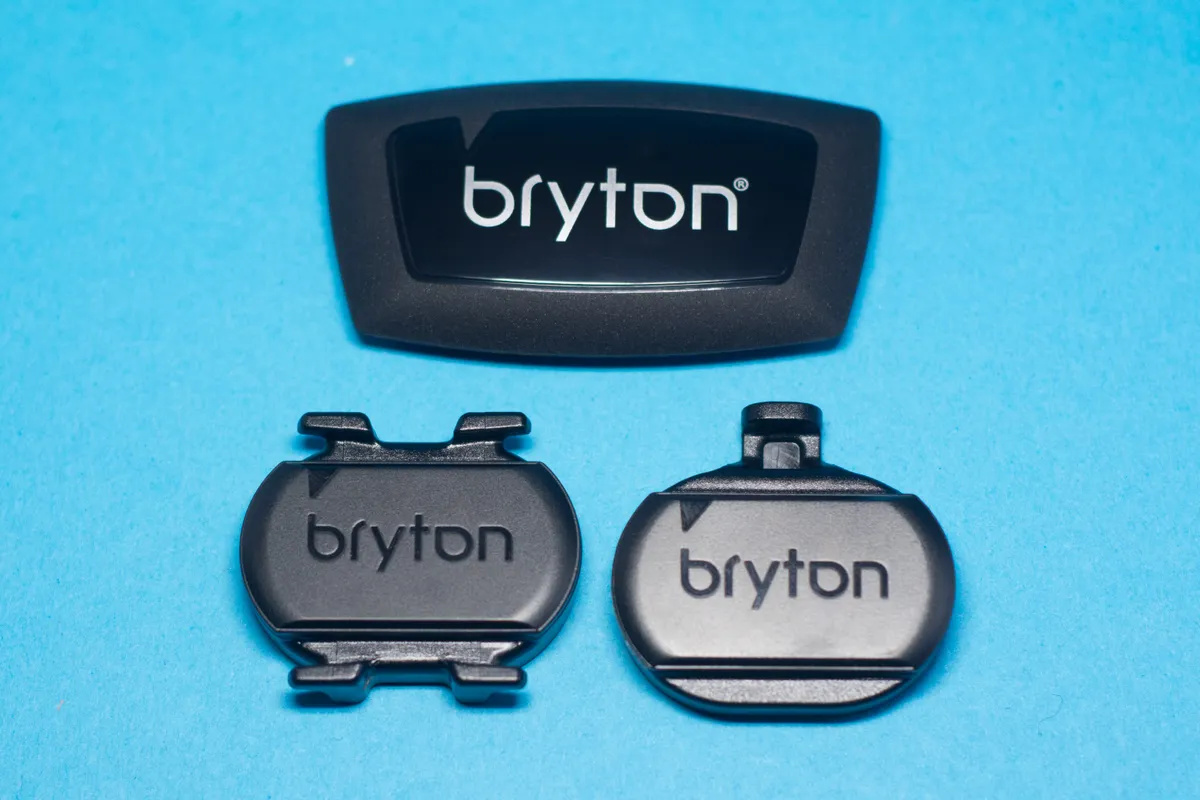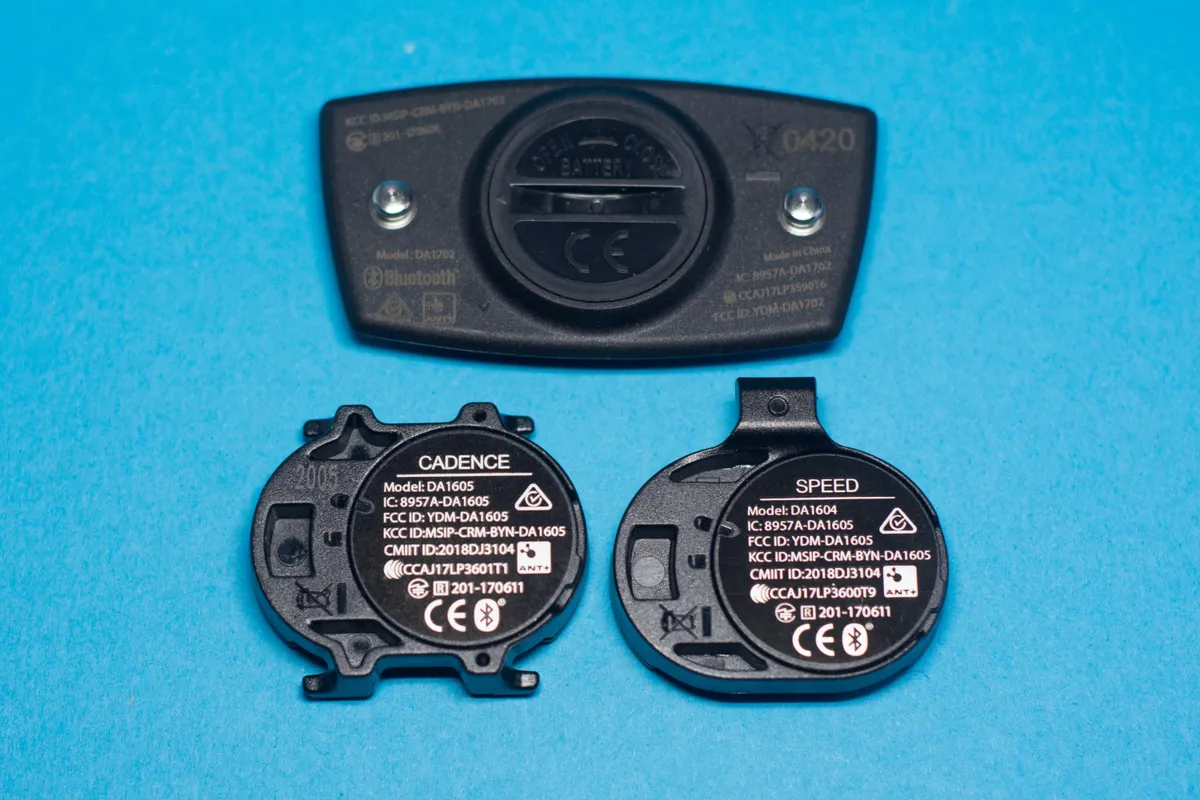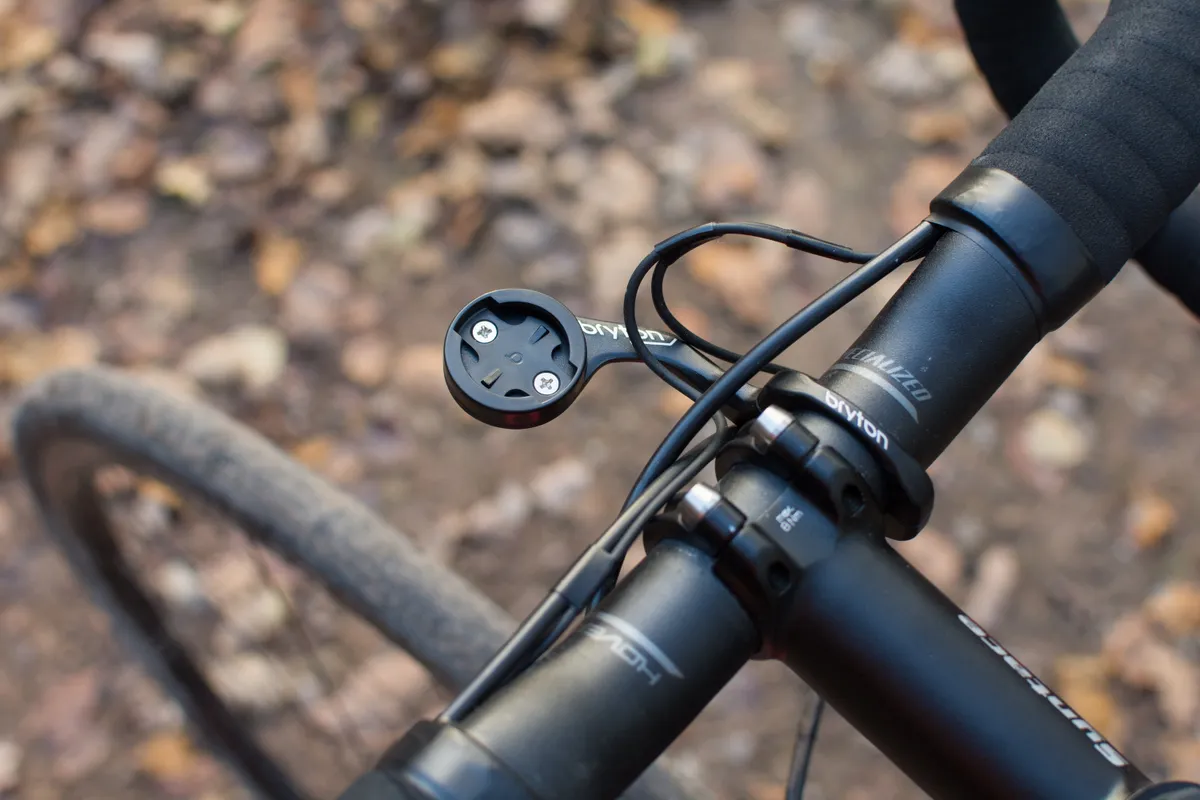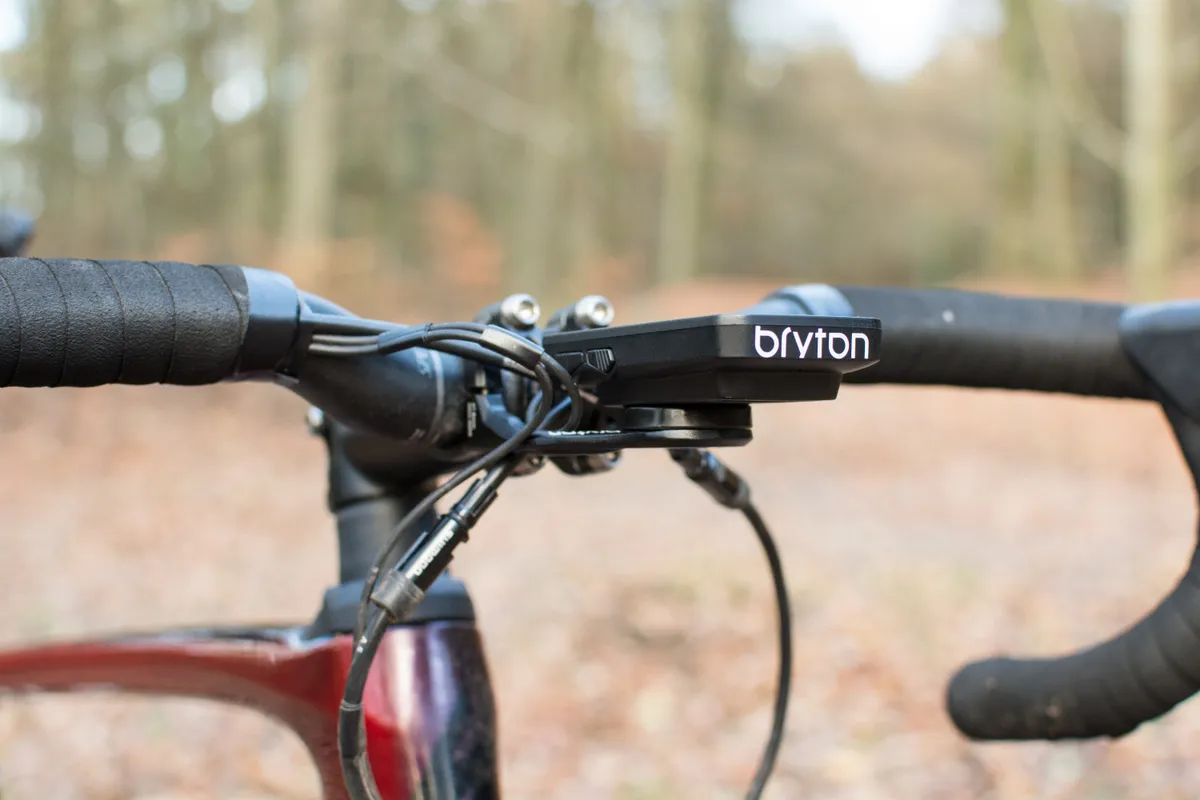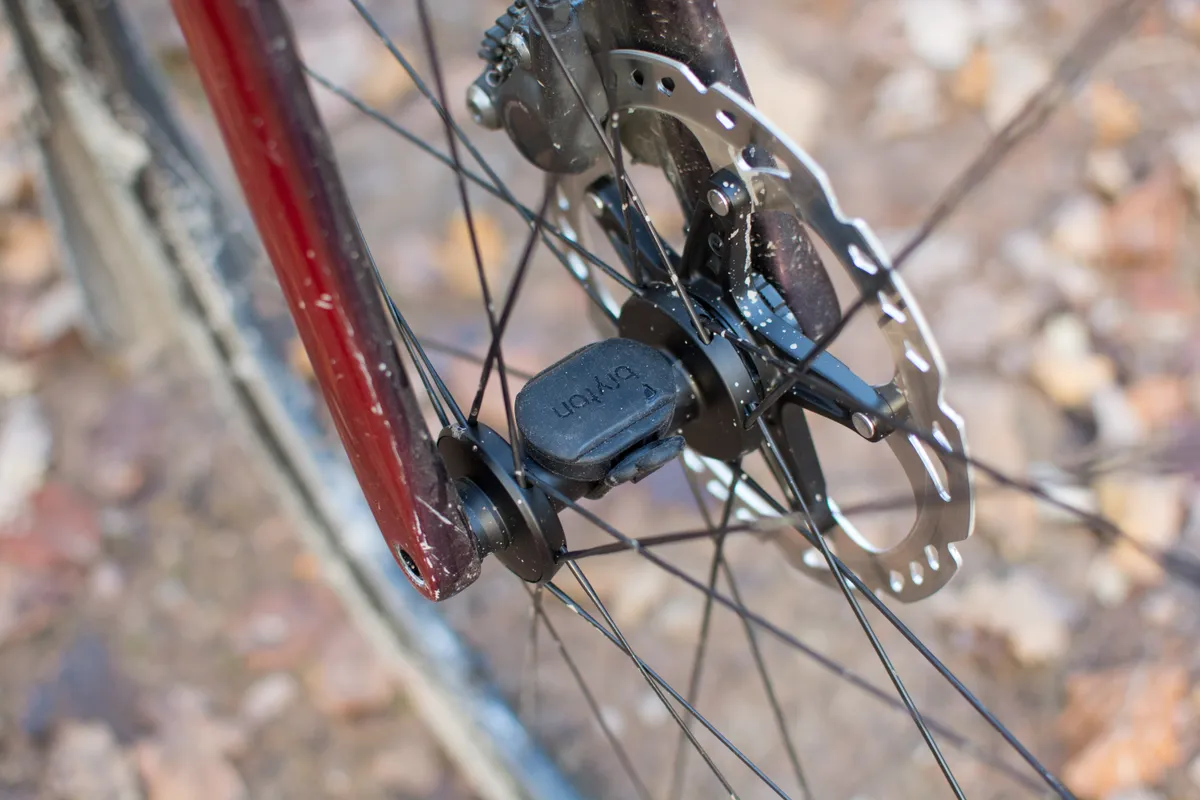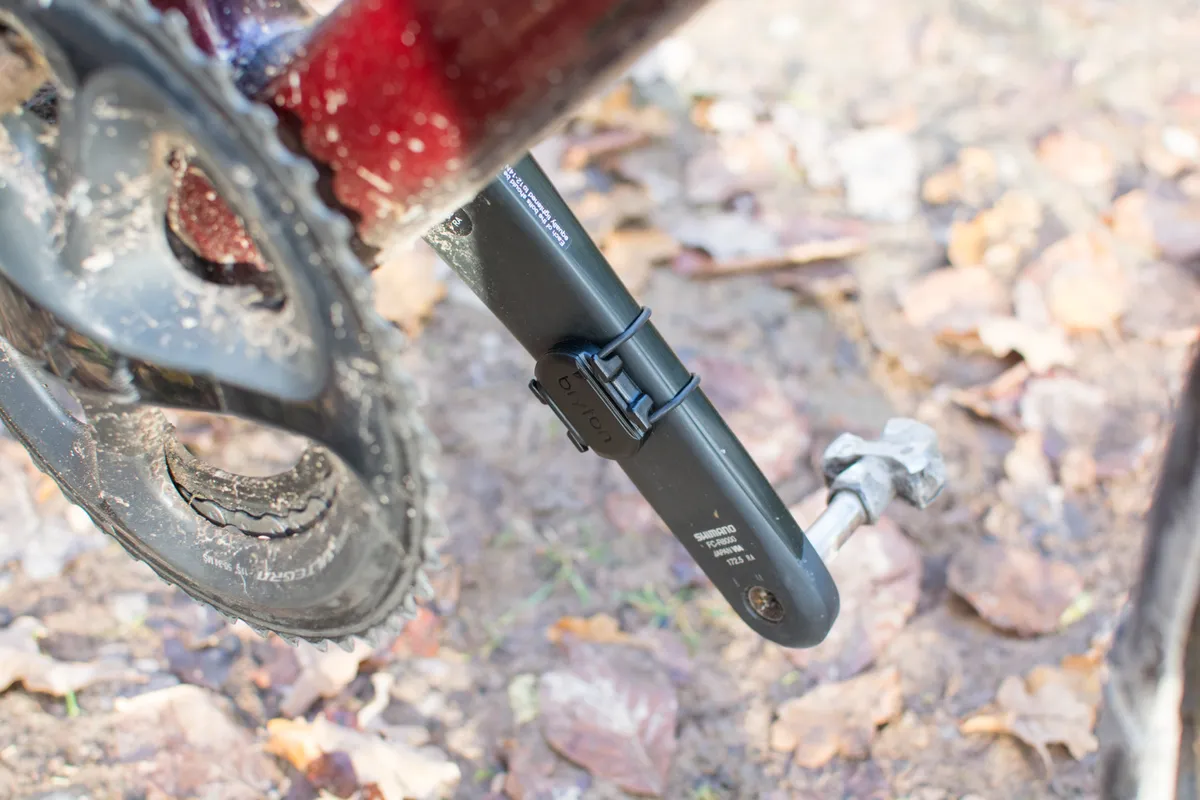Bryton’s brand-new Rider 750 is a GPS bike computer with a 2.8in colour touchscreen and a unique selling point in the form of voice search navigation.
Priced at £219.95 / $269.95 or £289.95 / $349.95 with speed, cadence and heart rate sensors, the Rider 750 has a feature set comparable to Garmin’s Edge 830, but costs significantly less.
It takes over from the Rider 860 as the brand’s flagship, promising greater functionality and better battery life in a lighter package, while sticking with the same screen size.
Garmin long dominated the GPS bike computer market before Wahoo arrived on the scene as a genuine rival. Could the Rider 750 now also bring Bryton to the fore?
Bryton Rider 750 key specs and features
- 2.8in colour touchscreen plus four physical buttons
- New graphical user interface
- On-device voice search
- Navigation via pre-loaded Open Street Maps
- Bluetooth, WiFi and ANT+ connectivity
- ANT+ FE-C smart trainer support
- ANT+ Radar support
- Electronic groupset support
- Three customisable bike profiles
- Claimed 20 hour battery life
- 95g claimed weight (plus 31g for out-front mount)
- 92.5mm × 49.7mm × 23.8mm (including protruding mount)
Unboxing the Bryton Rider 750
The basic Bryton Rider 750E bundle ships with a sturdy-feeling metal out-front mount, an additional o-ring mount, a lanyard and a micro-USB charging lead.
The Rider 750T bundle we have here includes the same accessories and also adds in speed, cadence and heart rate sensors.
The Rider’s mounting interface is a quarter-turn design and bears a strong resemblance to Garmin’s, but isn’t actual identical.
The out-front mount weighs 31g on my scales, while the speed sensor is 14g and the cadence sensor is 10g.
The Rider 750 itself is around a quarter the size of a typical phone, but quite a bit thicker. While the touchscreen is a headline feature, there are four physical buttons too (two either side) that control major functions including power on/off, locking the screen, lap reset, record/pause and cycling through pages.
Recharging is via a micro-USB port hidden under a flap on the back of the unit. Incidentally, the Rider 750 has an IPX7 waterproof rating, which means it should withstand immersion in a metre of water for 30 minutes.
Bryton Rider 750 features and navigation

The Rider 750 is pitched as a premium device with the ability to display an immense range of metrics, plus navigation.
According to Bryton, it features a new graphical user interface that’s designed to be intuitive, and which offers a dashboard style graphics in addition to conventional data fields. Up to eight pages of data are available, each displaying up to 12 fields.
There are three customisable riding profiles, so you can tailor the setup to different disciplines, or even to specific bikes.
The Rider 750’s navigation is based on Open Street Maps, which it displays in full colour.
Its unique selling point is the voice search, which means you can speak the name of a destination into the device rather than trying to type it in a tiny virtual keyboard.
As with the competition, you can also ride pre-planned courses.
Bryton Rider 750 connectivity
Like every fancy GPS on the market, the Rider 750 needs to be paired with a phone to unlock its full potential.
Bryton has its own Active app for iOS and Android, which lets you manage your device, plan rides and link to third-party apps such as Strava.
While you can perform most actions via the device itself, much of the Rider 750’s functionality is mirrored by the app (e.g. customising data screens), and some things will be easier using your phone’s interface rather than the device’s.
The Rider 750 also has a full complement of Bluetooth, ANT+ and WiFi capabilities, meaning it’ll work with all manner of external sensors.
In addition, ANT+ FE-C capability means it can connect to smart trainers and control them, for example if you want to do a structured workout. The Rider 750 can also connect to Di2, eTap and EPS electronic groupsets to display drivetrain-related data.
Bryton Rider 750 first impressions
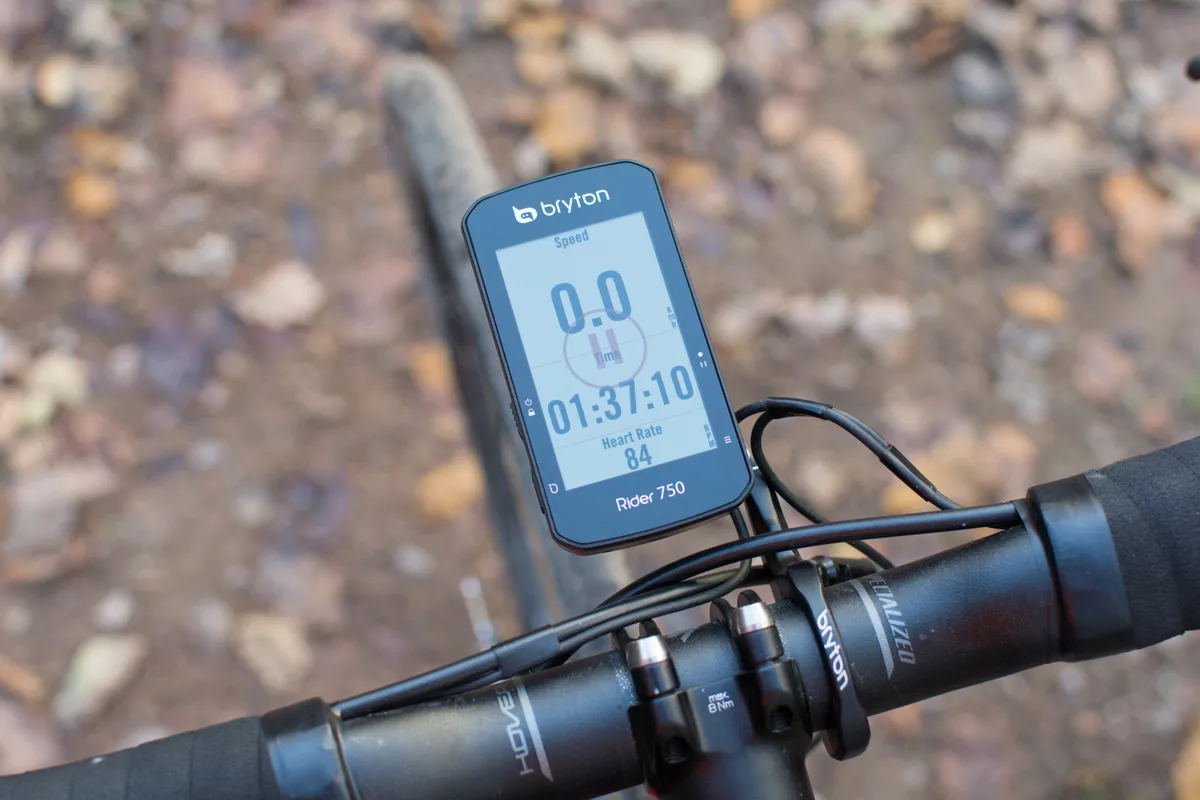
On the face of it, the Rider 750 seems to offer a huge feature-set for the money.
The plastic used in its construction feels a little cheaper than that of Garmin, but overall the unit feels solid and well made, and the supplied mount is super stiff and pleasingly unobtrusive.
Installing and pairing sensors appears mostly straightforward, although for reasons not immediately apparent my test unit recognised the speed and cadence sensor instantly, but took its time with the heart rate monitor.
That speed sensor straps around the body of your front hub by the way, while the cadence sensor attaches to the non-driveside crank arm.
Both install in a matter of seconds and, with no cable ties or adhesives used, they can be removed equally quickly.
The interface is generally intuitive and the touchscreen works fairly well, although, as with other bike computers, it feels somewhat unresponsive compared to a typical phone.
Look out for a full review of the Bryton Rider 750 in the near future.
Bryton Rider 750 pricing
- Rider 750E bundle with mounts only – £219.95 / $269.95 / €249.95 / AU$429.95
- Rider 750T bundle with mounts plus speed sensor, cadence sensor and HRM – £289.95 / $349.95 / €319.95 / AU$549.95
